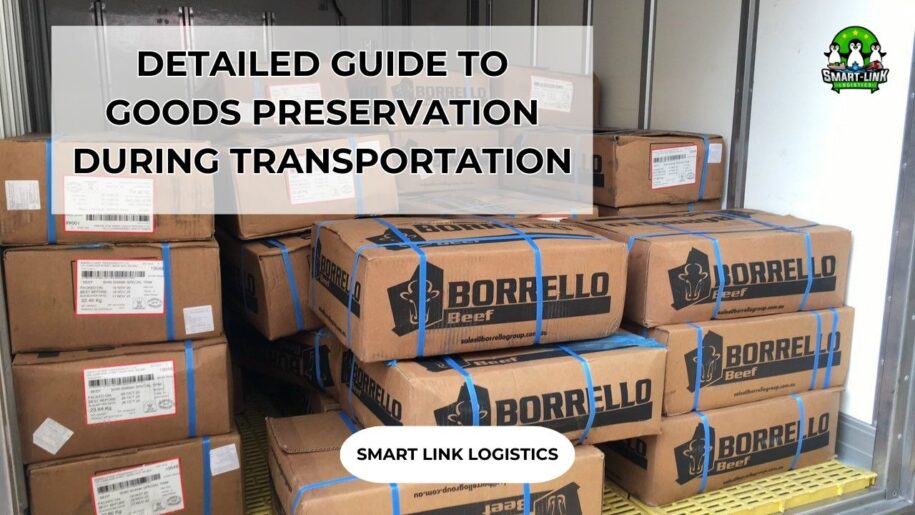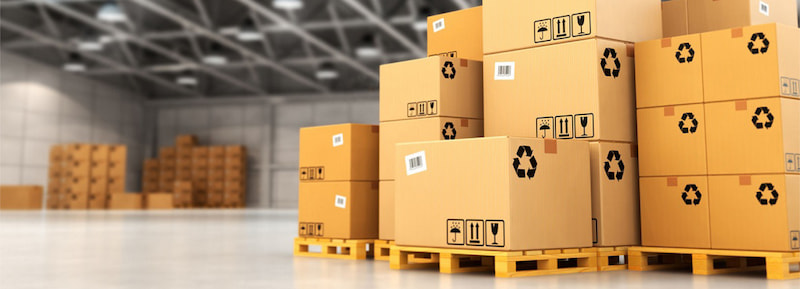
DETAILED GUIDE TO GOODS PRESERVATION DURING TRANSPORTATION
Proper preservation during transportation plays a critical role in maintaining the quality, safety, and integrity of goods from the warehouse to the recipient. Each type of cargo requires a specific preservation method, especially in long-distance or international shipping. In this article, we will explore detailed and effective ways to preserve goods during transportation, helping you minimize risks and optimize logistics performance.
1. Classifying Goods for Appropriate Preservation
To optimize preservation, goods are typically categorized into two main groups:
-
Dry Goods: Includes electronics, fragile items, liquids, and bulky cargo.
-
Perishable (Cold Chain) Goods: Primarily fresh or frozen food, pharmaceuticals, and certain chemicals.
Each type requires distinct packaging and preservation methods to ensure safety throughout transit.
2. How to Preserve Dry Goods During Transportation
2.1 Electronics
-
Shock Absorption: Use foam or polyethylene padding, especially around corners—the most impact-prone areas.
-
Snug Packaging: Select appropriately sized cartons to avoid excess space and shifting.
-
Secure Sealing: Seal boxes tightly with tape and label clearly with “Fragile” when necessary.
2.2 Liquid Goods
-
Seal Bottle Caps: Use tape to tightly secure caps and prevent leaks.
-
Cushion Bottles: Use foam or padding between bottles and box walls.
-
Use Specialized Equipment: For large volumes, Iso tanks or Flexitanks are recommended to ensure safety in containers.
2.3 Fragile Items
-
Separate and Cushion: Wrap each item individually using bubble wrap or foam padding.
-
Avoid Stacking: Prevent stacking to reduce pressure damage.
-
Reinforce Boxes: Ensure the boxes are sturdy and remain intact during movement.
2.4 Bulky or Oversized Goods
-
Use Wooden or Heavy-Duty Cartons: These help stabilize the cargo during transit.
-
Fill Empty Spaces: Use foam or padding to prevent shifting.
-
Reinforce Corners: Secure the most vulnerable edges to avoid damage.
2.5 Dry Pharmaceuticals
-
Follow Storage Guidelines: As indicated on the product labels.
-
Avoid Direct Sunlight: Especially for western medicine or powdered drugs.
-
Use Vacuum Sealing: For traditional herbal medicines to prevent mold and moisture.

3. How to Preserve Cold Chain Goods During Transportation
3.1 Identify Type of Product and Storage Temperature
-
Frozen Food: Below -18°C.
-
Fresh Fruits & Vegetables: Between 0°C and 5°C.
-
Pharmaceuticals & Chemicals: Follow manufacturer specifications precisely.
3.2 Use Suitable Transportation Equipment
-
Refrigerated Trucks / Containers: Must maintain a stable internal temperature.
-
Temperature Monitoring Devices (CHIP): Record temperatures throughout transit, providing verifiable data if needed.
3.3 Proper Cold Chain Packaging
-
Use Insulated Materials: Such as foam boxes, bubble wrap, and PE thermal insulation film.
-
Dry Ice or Gel Packs: Maintain low and stable temperatures inside packages.
-
Tight Sealing: Prevent warm air from entering and compromising product quality.
3.4 Maintain an Unbroken Cold Chain
-
Optimize Transit Time: Ensure fast delivery to avoid outdoor storage.
-
Seamless Transitions: From warehouse to refrigerated truck, to container, to customer storage—all stages must maintain cold chain integrity.
3.5 Monitor and Prepare for Unexpected Incidents
-
Continuous Temperature Monitoring: Detect and address refrigeration failures promptly.
-
Backup Plans: Be ready to change transport vehicles, enhance cooling, or switch containers when necessary.
4. Important Considerations Upon Delivery
-
Prompt Cold Storage Placement: Especially critical for food and pharmaceuticals.
-
Inspect Product Quality: Avoid overlooking damages or spoilage.
-
Complete Reporting: For cold chain cargo, include temperature logs and journey reports to verify compliance with preservation standards.
Conclusion
Mastering the techniques of preserving goods during transportation not only safeguards product quality but also helps reduce costs and minimize risks. From dry goods to cold chain items, each category requires a tailored packaging, transport, and monitoring strategy. Partnering with reputable and professional logistics providers is key to ensuring the safe and successful delivery of your goods.
If you’re looking for the best import-export solutions, feel free to contact us for detailed consultation. If you need legal support or assistance with customs procedures in import-export activities, please contact Smart Link Logistics for fast and efficient consultation. With over 14 years of experience in the transportation field, we are proud to accompany you throughout your journey.
Hotline: + 84 902 964 982 to know more about our services

If you require assistance with international import and export of goods, please contact our team at Smartlink Logistics. We are available to provide you with professional guidance on our services and the necessary customs procedures.
SMART LINK: BEST SERVICE BEST YOU


































